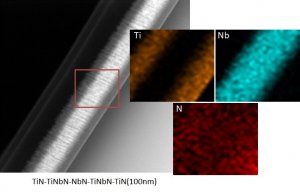Summary
Conventional superconductors have trouble performing well in magnetic fields required for electron spin resonance (ESR) – based quantum information processing applications. We can, however, use proximity engineering to select desired properties from different materials and combine them for improved superconducting performance in magnetic fields — an improvement that would have strong implications for the storage and transfer of quantum information in superconductor quantum circuits. In this project, we will construct composite heterostructures with nitrides, oxides and hybrid materials involving high-temperature superconducting oxides and “conventional” transition metals/nitrides. Later, we will use these new composite superconductors to demonstrate improved resonator performance and optimize growth and fabrication recipes towards large-scale quantum circuits. By optimizing the composite heterostructure, and through later integration in a superconducting quantum circuit, we hope to enable larger-scale, more efficient quantum computers.

Figure 1. Example of a nitride heterostructure with tapered interfaces for improved superconductivity proximity coupling. Images shown are STEM and EELS elemental mapping.
Related Content

Zero-Dimensional Quantum Materials for the Next Generation of Highly-Selective Chemical Sensors
Summary Heavy metals are a major public health concern and their on-site detection in water supplies is not well served by existing lab techniques. We develop a new multi-modal platform comprising functionalized quantum dots of two-dimensional materials (2D-QDs) for the sensing of four highly-toxic heavy metal pollutants (arsenic, cadmium, lead and mercury). The zero-dimensional […]
March 11, 2019

Towards large area, resonant quantum tunneling diodes by continuous Langmuir transfer of exfoliated 2D materials
Summary Atomically thin 2D materials constitute promising building blocks for quantum devices due to their exotic, layer-dependent electronic properties. The ability to stack these materials in alternating layers enables heterostructures to be built in almost limitless combinations and over small enough length scales to observe quantum phenomena. So far though, practical implementation of devices based […]
April 1, 2020
Line-Scanning optical coherence tomography system for in-vivo, non-invasive imaging of the cellular structure and blood perfusion of biological tissue
Summary Optical coherence tomography (OCT) is an optical imaging method that allows for in-vivo, non-invasive imaging of the structure and vasculature of biological tissue. Commercially available, clinical OCT systems utilize point-scanning method to acquire volumetric images over a large surface with typical frame rates of ~ 30 frames/ second. Since living biological tissue is constantly […]
August 27, 2019
Using Interactive Digital Storytelling to Represent Transformative Quantum Technologies in Augmented/Extended Reality Environments
Summary A major roadblock to the broader adoption of quantum technologies is the long learning curve associated with their seemingly abstract concepts. This often renders quantum technologies inaccessible to most audiences, especially through explanations using conventional scientific language. In this project, we develop novel methods of interactive digital storytelling – augmented and extended reality (AR/XR) […]
February 24, 2021

